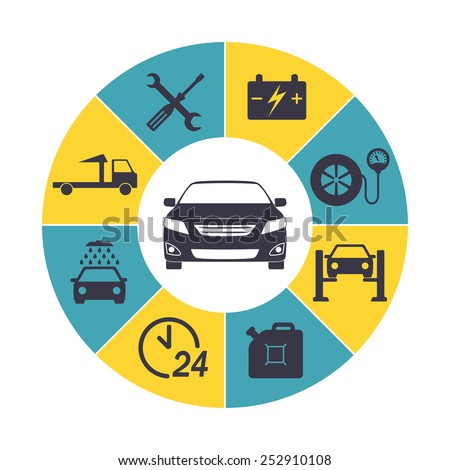Understanding Your Vehicle'S Caution Lights: What Do They Actually Mean?
Understanding Your Vehicle'S Caution Lights: What Do They Actually Mean?
Blog Article
Short Article By-Sykes Kejser
When you're behind the wheel, those beautiful warning lights on your dashboard can be a little bit difficult. Do just click the following post understand what they're attempting to tell you about your cars and truck's health and wellness? Comprehending the importance of these lights is essential for your safety and security and the long life of your vehicle. So, the next time among those lights pops up, would not you wish to decipher its message precisely and take the necessary steps to address it?
Common Warning Lights and Interpretations
Identify typical caution lights in your vehicle and recognize their meanings to guarantee risk-free driving.
The most regular warning lights include the check engine light, which signifies concerns with the engine or exhausts system. If this light begins, it's vital to have your automobile inspected without delay.
The oil stress alerting light indicates low oil pressure, needing instant focus to stop engine damages.
A blinking battery light might recommend a malfunctioning charging system, potentially leaving you stranded otherwise dealt with.
The tire stress monitoring system (TPMS) light notifies you to reduced tire pressure, influencing vehicle security and gas efficiency. Ignoring this could cause unsafe driving conditions.
The ABS light shows a problem with the anti-lock braking system, endangering your ability to quit promptly in emergency situations.
Lastly, the coolant temperature cautioning light warns of engine getting too hot, which can result in severe damage otherwise dealt with promptly.
Understanding car wash service will aid you address issues immediately and maintain risk-free driving problems.
Importance of Prompt Attention
Recognizing the usual warning lights in your cars and truck is just the first step; the significance of promptly resolving these cautions can't be highlighted sufficient to ensure your security when traveling.
When a caution light illuminates on your control panel, it's your auto's method of interacting a possible problem that requires attention. Overlooking these warnings can cause more extreme troubles down the road, jeopardizing your safety and potentially costing you more out of commission.
Motivate focus to advising lights can stop failures and mishaps. As an example, a flashing check engine light might show a misfire that, if left unattended, could create damage to the catalytic converter. Resolving https://www.thurstontalk.com/2022/07/25/thurston-economic-development-council-awards-economic-courage-medals-at-hootenanny/ can conserve you from an expensive repair.
In a similar way, a brake system warning light could signify reduced brake liquid or used brake pads, vital elements for your safety and security when driving.
Do It Yourself Troubleshooting Tips
If you notice a caution light on your control panel, there are a few do it yourself troubleshooting suggestions you can attempt prior to looking for expert help.
The very first step is to consult your automobile's handbook to recognize what the specific caution light suggests. Often the concern can be as easy as a loose gas cap activating the check engine light. Tightening the gas cap may resolve the issue.
One more usual concern is a reduced battery, which can trigger different cautioning lights. Examining the battery connections for rust and guaranteeing they're safe and secure may repair the problem.
If a caution light lingers, you can attempt resetting it by disconnecting the vehicle's battery for a few minutes and then reconnecting it. In addition, examining your vehicle's fluid levels, such as oil, coolant, and brake liquid, can assist troubleshoot advising lights associated with these systems.
Final thought
Finally, comprehending your vehicle's warning lights is necessary for keeping your lorry running smoothly and safely. By immediately resolving these alerts and understanding what they indicate, you can avoid pricey repair work and prospective malfunctions.
Remember to consult your cars and truck's manual for certain information on each advising light and take action appropriately to ensure a hassle-free driving experience.
Stay notified, remain risk-free when traveling!
